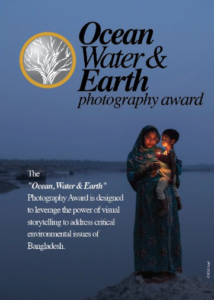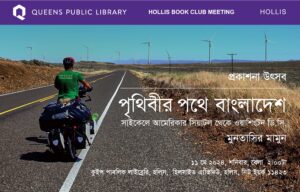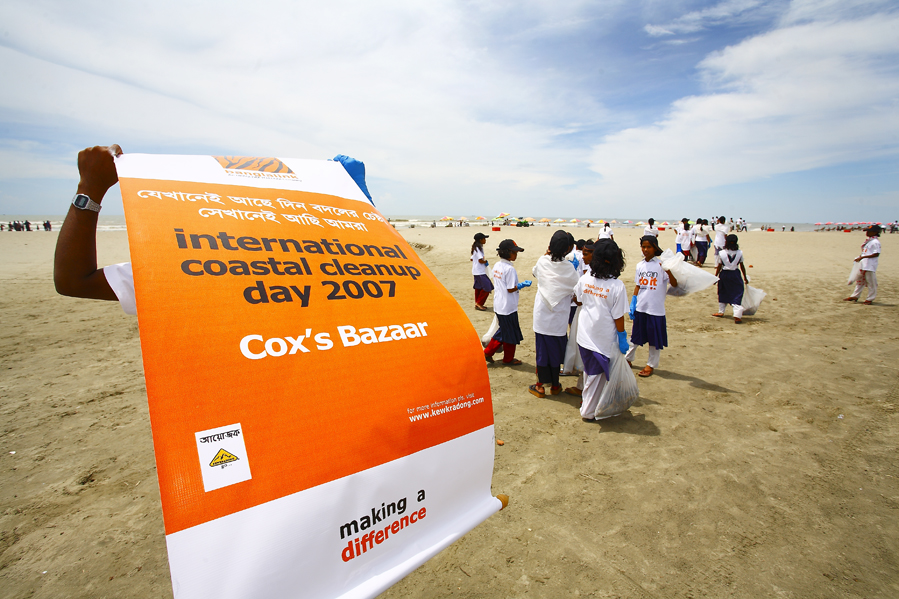
International Coastal Cleanup | 2007
Choking Coastlines
There are a few major tourist locations in Bangladesh, but without a doubt Cox’s Bazar is the most frequented and well known. Its pristine beaches, quiet serenity and laid back atmosphere make it an ideal holiday destination. Now, what people took most for granted, its unspoiled beaches, are being choked with mountains of garbage and marine waste. The once beautiful and untouched Cox’s Bazar is now a filthy mess, to add to that the Department of Environment (DOE) has listed it as an ecologically critical area (ECA). In essence it means double the trouble, aside from being an ECA it has a pollution problem which could, and some experts say already is, greatly affecting the environment. But with regard to coastal pollution in Bangladesh, Cox’s Bazar is not the only problematic area, there is the whole Cox’s Barzar-Teknaf peninsula, along with St. Martin, Shonadia and Kuakata. Cox’s Bazar is just one case of a larger problem, a problem which people are trying to overcome through various programmes; this truly is the time to act before it’s too late.
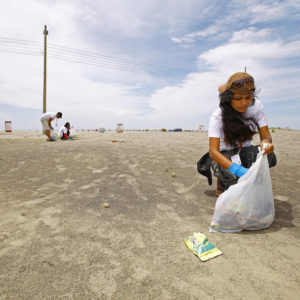 September 14 marked the International Coastal Cleanup (ICC), a day where volunteers from around the world took to beaches and waterways to collect trash and any sort of polluting elements they could get their hands on. This year for the third year in a row, Bangladesh took part in the global event, it proved to be the largest event yet with close to 300 people participating along with Banglalink as the title sponsor. One might think that an isolated day like this once-a-year event can’t achieve much; nothing could be further from the truth. One had to be there to see the volunteers – children of all ages- from the first grade right through to university students- sifting through the sand and picking up any and every piece of waste on the beach, to fully understand exactly what a day like that can do.
September 14 marked the International Coastal Cleanup (ICC), a day where volunteers from around the world took to beaches and waterways to collect trash and any sort of polluting elements they could get their hands on. This year for the third year in a row, Bangladesh took part in the global event, it proved to be the largest event yet with close to 300 people participating along with Banglalink as the title sponsor. One might think that an isolated day like this once-a-year event can’t achieve much; nothing could be further from the truth. One had to be there to see the volunteers – children of all ages- from the first grade right through to university students- sifting through the sand and picking up any and every piece of waste on the beach, to fully understand exactly what a day like that can do.
The day started at about 10:30 with all the students lined up in their sponsored T-shirts and caps. It was actually quite a sight, the volunteers were standing according to their height, therefore the beginning of the procession there were the smallest children, ready and raring to go. The smallest and youngest was Nilufer, she was in the first grade but even she knew what she was up for.
“I’m here to clean the beach, we can’t keep it dirty forever”, she said. She understood the enormity of the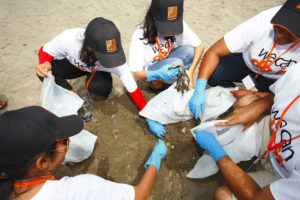 task and the event as much as the next person, and by teaching the youth of today it ensures future generations don’t make the same mistakes.
task and the event as much as the next person, and by teaching the youth of today it ensures future generations don’t make the same mistakes.
While the event may have been sponsored by Banglalink, the real organisers of the event were a group by the name of Kewkradong. In their own words they say “Kewkradong believes in creating and gathering local enthusiasm towards voluntarism and conceptual adventure/ humanitarian/ nature building tourism in Bangladesh. Kewkradong shows professional attitude during handling different projects, expedition planning, concept development and inter organization relationship.” Three years ago it was Muntasir Mamun of this organisation who brought the topic of coastal cleaning closer to the public by arranging Bangladesh’s first participation in the International Coastal Cleanup. He is currently Country Coordinator Bangladesh, for the ICC.
“The idea of a coastal clean up did not come to me over night”, he says. “I actually went to a mountain conservation meet in Japan in 2005, there they first told me of the ICC. I was told to get in touch with The Ocean Conservancy in Washington if I wished to start the project in Bangladesh. The 2005 ICC was soon after my trip, so just a handful of us took part by cleaning as much of Cox’s Bazar as we could. It was great fun, but I still had not officially contacted The Ocean Conservancy about specifically how Bangladesh could join the rest of the world in the ICC.” Even if he did not get in touch with the ocean conservancy and even if Bangladesh did not take part in the ICC the matter of coastal pollution was and still remains a huge problem. Mamun simply took a step in the right direction, and tried to link it to the collective consciousness of the nation.
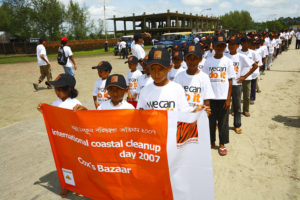 “In January 2006, I contacted the Ocean Conservancy and filled out their documents”, says Mamum. “They soon sent me a parcel weighing 45 kg full of documents! It was unexpected to say the least. The package contained explanatory posters, brochures, data cards and certificates. But to receive the parcel I had to pay USD 400 out of my own pocket to customs”, he says. Now he needed more volunteers, the only way he could do that was to offer them something as well. Rajshahi University contacted him about giving a lecture on mountain climbing, he said he would only accept if they gave him some students to help out with his coastal cleaning effort. The Geography and Environmental Sciences Department helped him out with six hours of service, cleaning the banks of the Padma.
“In January 2006, I contacted the Ocean Conservancy and filled out their documents”, says Mamum. “They soon sent me a parcel weighing 45 kg full of documents! It was unexpected to say the least. The package contained explanatory posters, brochures, data cards and certificates. But to receive the parcel I had to pay USD 400 out of my own pocket to customs”, he says. Now he needed more volunteers, the only way he could do that was to offer them something as well. Rajshahi University contacted him about giving a lecture on mountain climbing, he said he would only accept if they gave him some students to help out with his coastal cleaning effort. The Geography and Environmental Sciences Department helped him out with six hours of service, cleaning the banks of the Padma.
His next effort would be to head up Bangladesh’s ICC mission. He says, “For the 2006 ICC the weather was very bad. Cox’s Bazar was right in the middle of a rather large storm. But through it all we managed to hold a successful event, about 100 of us worked with the event last year and it really was a lot of fun.” Aside from being just another event, in 2006 the locals became aware of the situation and hazards of coastal pollution. So much so that the Assistant District Commissioner of Cox’s Bazar, Omar Faruk helped out.
The movement was steadily gaining ground, all it needed now was large-scale awareness, and with sponsorship from Bangalink this year that is exactly what it got. But while the international coastal cleanup is a noble cause, who exactly are they benefiting? Mohammad Abdul Hannan, wildlife biodiversity conservation officer for the department of environment (DOE), answers, “To most people the cleaning of the coast is simply a cosmetic effect, but the truth of the matter is that the wildlife is what benefits most.” Hannan works for the Coastal and Wetland Biodiversity Management Project, a project which is funded by the UNDP and Global Environment Facilities (GEF). Interestingly, the GEF only funds projects that are globally important.
Hannan says, “Bangladesh suffers from major pollution problems, they are not limited to any one area, but it would be a fair assumption that the pollution by the sea is possibly the most damaging. Most of the debris along our shorelines is marine debris while a large amount of the debris in Cox’s Bazar is tourist related. The multiple effects of the pollution, moreover, are far-reaching and devastating. Many animals, for instance, such as sea turtles die after eating plastic waste such as helium balloons left around the beach. They do that because under-
water helium balloons resemble jellyfish, their staple diet.
While the statistics of animals entangled in any sort of waste are quite low in Bangladesh that does not necessarily mean the problem does not exist. In most cases fishermen and villagers simply do not report it, therefore it eludes the DOE statistics. But the problem of animals being trapped in coastal waste is very real and unless Bangladesh’s coastline is cleared the number of incidents will increase, and in ecologically critical areas such as St. Martin’s, Shonadia and the Cox’s Bazar-Teknaf peninsula the results on the animal habitats could be catastrophic. Hannan says “The scope of research into seeing how many animals die because of waste products is low, and that is a major problem if we are to assess the current situation correctly.”
Hannan says “For animals such as the sea turtle, marine debris has a major impact on its nesting habits. And a problem with its nesting habits could threaten the survival of the species. When the turtles come lay their eggs if they find any form of obstruction such as marine debris, a plastic cup or anything then they immediately stop digging their next nest. They will move on to a new place, if it happens again they will more often than not forgo nesting that year and head out to water. This scenario may sound far-fetched but with the levels of pollution in Cox’s Bazar and the surrounding areas this has happened many a time. This is a huge problem and there has to be a concerted effort from everyone to reduce the amount of waste and pollution on the beaches of Bangladesh.”
The pollution around the coast of Bangladesh currently affects migratory birds, sea turtles and cetaceans such as dolphins and whales. In 2004 there was a much-publicised case of a dolphin trapped in old fishing nets in the Sunderbans. Situations like that need to be avoided especially since the Cox’s Bazar area is an ecologically critical zone. Seagulls and migratory birds are also victims of the sea side garbage. They often pick up garbage and eat it and in some extreme cases get trapped in it. For one to truly see the effect of coastal pollution one must learn to look beyond the tourist locations of Cox’s Bazar. Hannan says “the situation is far worse in St. Martin’s, there the levels of pollution have reached unmatched heights and because it is an island it has become a very tough job to clean that area.”
Hannan explains that the nature of garbage is different in different places. In Inani beach, for example, one will find mainly coconut husks and old fishing material as seaside garbage. In Shonar Para and Kolatoli one can find a lot of Styrofoam and all of that is related to the shrimp hatcheries in those areas. In Shonadia another ECA, one will mainly find fishing related debris such as, sandals, drums, nets and different kinds of plastic. And as everyone knows the Cox’s Bazar area is full of garbage left by careless tourists.
“This information can be used effectively to clean the different types of garbage, and that is exactly what we tried on the ICC day” says Hannan. “That day we (DOE) asked all the shrimp hatcheries to clean up their own waste on the beaches and they did it. The point is now that they have done it once, we have to try and make them do it every day of the year. Individuals and industries must take charge of their waste. If everyone does their part, coastal pollution no longer be a problem.”
To this argument Muntasir Mamun adds “One interesting thing about the ICC is that we have data cards to fill out and there we must catalogue all the types of garbage we pick up. It is clear from those data cards that the main polluting item that we found on the beach was cigarettes butts and packets. They definitely accounted for most of the garbage, followed by plastics such as chips and biscuit wrappers.” What he plans to do is collect this information over a period of a few years and then ask the producers them selves to clear away any pollution that they individually cause. For example British American Tobacco will be obliged to clean their own waste. If something along these lines could be worked out then at least the major tourist destinations could be kept pollution free and with the least amount of hassle. Large companies are quick to talk of corporate social responsibility, with this one act many of them could put there money where there mouth is.
After it is all said and done one really needs round the year cleaning and that initiative has already been taken by Banglalink and Green World. Under the leadership of Hedaitul Islam Helal and with the sponsorship of Banglalink, for the past two years, Cox’s Bazar has been cleaned by a team of young boys. The project started in 2005 and has been a great success so far. To understand how well the crew works one merely needs to think of the state of the beach before 2005. Helal says “I pioneered the programme and since its start its motto has been quite simple, that a clean society can only grow a clean citizen. Helal says “The ideal situation would be if people came and learned from my boys that littering was bad, then everyone would be socially responsible. I assure you if that happened then not even my team would be needed to clean the beach.” He sent in a proposal to Banglalink a few years ago, and it was all quite simple if they would fund him in keeping the beach clean and much to his surprise they jumped at the opportunity. Helal continues “The Cox’s Bazar Beach Cleaning Project is a fairly simple plan. Under the project 17 boys clean the beach twice a day and in return we pay for their food, lodging, clothes and medical expenses. Over and above that, we pay them Tk 800 a month. To help me there are two supporting staff and one teacher who educates them.”
The average day for one of these boys begins at around 6:00 or 6:30 am when they first come onto the beach. They stay on the beach and clean it till 10:00. Then they get a break till 3:30 in the afternoon when they start their second shift which ends roughly at 5:00 or 5:30 pm. In between shifts they get time off and given basic lesson in reading and writing. Currently he has 17 youngsters between the ages of 14 to 19 but seemingly almost every day dozens of children ask if they can join the squad. It is a problem Helal is quite happy to face. He also runs seasonal cleaning in Kuakata and St. Martin’s but all on a smaller scale and only during the tourist season, but he hopes to expand. “I hope to spread the message of cleanliness and protect our beaches as well, these boys working under me really understand the meaning of sustainable living, now all we need are others to follow.”
The issue of coastal cleaning is not one we can shy away from. It has to be dealt with and dealt with fast. Bangladesh is choking its beaches up in three ecologically critical areas. What is needed is a little education and a lot of hard work. Fishermen must be taught not to throw empty nets into the ocean and we must not litter the seaside. In Cox’s Bazar the main people to blame are the tourists, without thinking they throw their trash away not understanding the consequences of their actions. A seagull or sea turtle may die because of an act as simple as throwing away a plastic cup on the beach. Some conscientious people have taken great pains to keep our beaches clean, but there is still a lot left to do. The time to act is now.
Nader Rahman | Star Weekend Magazine | Cover story
Volume 6 Issue 37 | September 21, 2007 |
http://archive.thedailystar.net/magazine/2007/09/03/cover.htm

